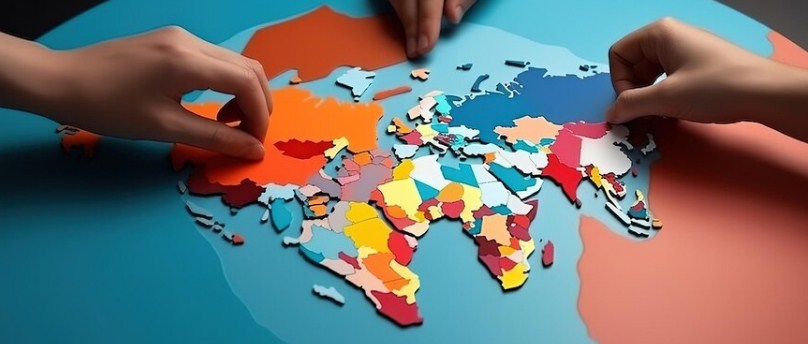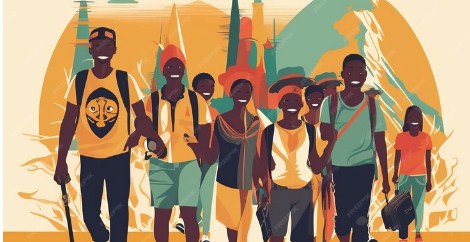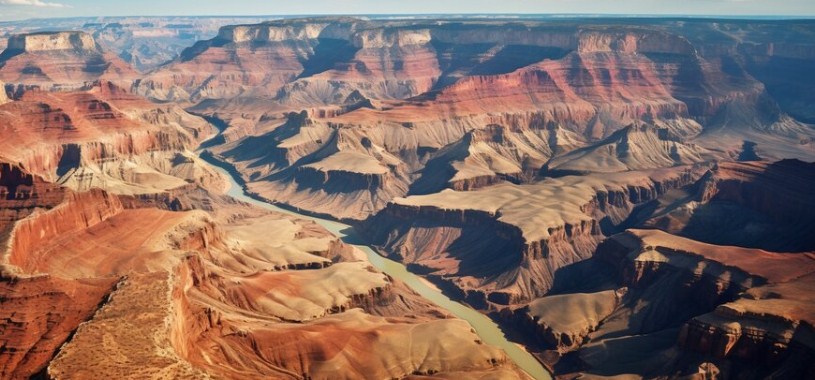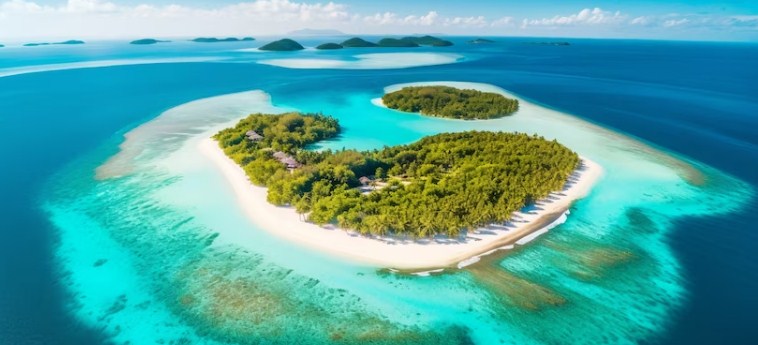World Travel Cultures; it is a transformative experience that opens doors to different cultures, customs, and traditions. As we embark on a journey across the globe, we delve into a fascinating exploration of the rich tapestry of world travel culture.
Table of Contents
1. Asia: A Continent of Contrasts

Asia, the largest continent on Earth, is a treasure trove of diverse cultures. Let’s explore a few of its most captivating destinations:
1.1. Cultural Diversity in India
India, with its vast expanse and rich history, is a melting pot of cultures, languages, and traditions. The table below illustrates the linguistic diversity of this remarkable country:
| Language | Number of Speakers |
| Hindi | 44.4% |
| Bengali | 8.1% |
| Telugu | 7.2% |
| Marathi | 7% |
| Tamil | 5.9% |
| Urdu | 5% |
1.2. The Traditions of Japan
Japan, known for its unique blend of ancient traditions and cutting-edge technology, has a rich cultural heritage. Here are some key aspects of Japanese culture:
| Aspect | Description |
| Tea Ceremony | An intricate ritual involving the preparation and consumption of matcha tea. |
| Ikebana | The art of flower arrangement, emphasizing harmony, balance, and simplicity. |
| Kimono | Traditional Japanese clothing with intricate designs, worn on special occasions. |
1.3. Mystique of the Middle East
The Middle East is a region steeped in history and tradition. Here’s a glimpse into the diverse cultures found in this part of the world:
| Country | Cultural Highlights |
| Saudi Arabia | Rich in Islamic culture and hospitality. |
| Israel | A blend of Jewish, Arab, and European influences. |
| Iran | Ancient Persian culture and cuisine. |
2. Europe: A Place of Many Cultures

Europe, the birthplace of Western civilization, boasts a multitude of cultures. Let’s explore a few European destinations:
2.1. The Romance of Italy
Italy, known for its passionate people and rich history, is a International Travel Cultures. Here’s a table showcasing the regional diversity of Italian cuisine:
| Region | Iconic Dish |
| Sicily | Pasta alla Norma |
| Tuscany | Fiorentina Steak |
| Campania | Neapolitan Pizza |
| Lombardy | Risotto alla Milanese |
| Sardinia | Porceddu |
2.2. The Nordic Nations
The Nordic countries, including Sweden, Norway, Denmark, Iceland, and Finland, share commonalities yet maintain distinct cultures. Here’s an overview of Nordic cultural elements:
| Element | Description |
| Hygge (Denmark) | The art of coziness and contentment. |
| Sauna (Finland) | A traditional Finnish steam bath. |
| Viking Heritage | Influences from the Viking Age. |
2.3. The Vibrancy of Spain
Spain, known for its lively fiestas and warm hospitality, is a cultural gem in Europe. Here are some iconic Spanish festivals:
| Festival | Description |
| La Tomatina (Buñol) | A tomato-throwing festival, celebrating food fights. |
| Running of the Bulls | An adrenaline-pumping event during the San Fermín festival. |
| La Feria de Abril (Seville) | A vibrant fair featuring music, dancing, and flamenco. |
3. Africa A Continent of Diversity

Africa is a continent of stunning landscapes and cultural diversity. Let’s explore some of its unique cultural elements:
3.1. Tribal Heritage in Africa
Africa is home to numerous indigenous tribes, each with its own customs and traditions. Here’s a table highlighting a few of them:
| Tribe | Region | Notable Traditions |
| Maasai | East Africa | Colorful beadwork and warrior culture. |
| Himba | Namibia | Use of otjize (red ochre) for body decoration. |
| Zulu | South Africa | Traditional dances and beadwork. |
3.2. The Colorful Cultures of North Africa
North Africa is a region where ancient traditions blend with modern influences. Here are some cultural highlights:
| Country | Cultural Aspects |
| Egypt | Pharaonic history, hieroglyphs, and pyramids. |
| Morocco | Rich Islamic and Berber heritage, vibrant souks. |
| Tunisia | A mix of Arab and Mediterranean cultures. |
3.3. The Rhythms of Sub-Saharan Africa
Sub
-Saharan Africa is known for its vibrant music, dance, and storytelling traditions. Here’s a glimpse into its diverse cultures:
| Country | Musical Traditions |
| Nigeria | Afrobeat, highlife, and juju music. |
| Senegal | Mbalax music and storytelling griots. |
| South Africa | A diverse range of indigenous music styles. |
4. The Americas From North to South

The Americas offer a diverse array of cultures, from indigenous traditions to modern influences. Let’s explore some key aspects:
4.1. The Cultural Mosaic of the United States
The United States is a cultural melting pot, influenced by a wide range of cultures from around the world. Here’s a table showcasing the diversity of languages spoken in the U.S.:
| Language | Percentage of Speakers |
| English | 79.1% |
| Spanish | 13.5% |
| Chinese | 0.9% |
| Tagalog | 0.7% |
| Vietnamese | 0.5% |
4.2. The Latin American Fiesta
Latin America is known for its vibrant festivals and passionate people. Here are some iconic celebrations:
| Festival | Description |
| Carnival (Brazil) | A spectacular extravaganza of samba and costumes. |
| Dia de los Muertos (Mexico) | A Day of the Dead celebration with colorful altars and parades. |
| Inti Raymi (Peru) | An Inca festival celebrating the sun god. |
4.3. The Indigenous Heritage of Canada
Canada has a rich indigenous heritage. Here are some key elements of indigenous cultures in Canada:
| Culture | Description |
| First Nations | Diverse indigenous cultures with unique languages and traditions. |
| Inuit | Indigenous people of the Arctic, known for their art and culture. |
| Métis | A distinct cultural group with a blend of indigenous and European heritage. |
5. Oceania Islands of Cultural Richness

Oceania, with its stunning islands, offers a unique blend of cultures. Let’s explore a few of these island nations:
5.1. The Indigenous Peoples of Australia
Worldwide Travel and Cultures, often referred to as Aboriginal and Torres Strait Islander cultures, have a deep connection to the land. Here’s an overview:
| Culture | Key Aspects |
| Dreamtime Stories | Oral traditions of creation and spirituality. |
| Aboriginal Art | Unique art forms, including dot painting. |
| Didgeridoo | Traditional musical instrument. |
5.2. The Maori Culture of New Zealand
The Maori people of New Zealand have a rich cultural heritage. Here are some elements of Maori culture:
| Aspect | Description |
| Haka | A traditional war dance, often performed to welcome guests. |
| Ta Moko | Traditional Maori tattooing. |
| Wharenui | Elaborate meeting houses with intricate carvings. |
5.3. Pacific Island Paradises
The Pacific Islands are known for their stunning beaches and unique cultures. Here are some island nations and their cultural highlights:
| Country | Cultural Elements |
| Fiji | Kava ceremonies and traditional mekes (dances). |
| Samoa | Fa’a Samoa (the Samoan Way), including tattooing and traditional dress. |
| Tonga | Polynesian customs, including the Lakalaka dance. |
6. Antarctica A Cultural Void?

Antarctica, while not known for its human culture, is a place of scientific exploration. Researchers from around the world gather here to study the unique environment. The culture of Antarctica is largely centered on scientific collaboration and environmental conservation.
7. Travel Etiquette and Respect
As you explore these diverse cultures, it’s essential to practice cultural sensitivity and respect. Here are some tips for culturally sensitive travel:
7.1. Tips for Culturally Sensitive Travel
- Do Your Research: Learn about the culture, customs, and taboos of the places you visit.
- Respect Local Dress Codes: Dress modestly in conservative areas and adhere to religious dress codes where required.
- Learn Basic Phrases: Familiarize yourself with common greetings and polite phrases in the local language.
- Ask for Permission: Always ask for permission before taking photos of people, especially in indigenous communities.
- Respect Sacred Sites: Treat religious and sacred sites with reverence and follow any rules or restrictions.
7.2. Common Cultural Misunderstandings
- Gestures and Symbols: Hand gestures and symbols can have different meanings in different cultures, so be cautious.
- Personal Space: Personal space norms vary; what’s comfortable in one culture might not be in another.
- Bargaining: Bargaining is common in some places but considered rude in others, so know the local customs.
- Tipping: Tipping practices vary widely, so research local norms to avoid over- or under-tipping.
- Gift-Giving: Gift-giving customs differ; it’s important to understand the appropriate etiquette.
8. The Impact of Travel on Culture
Travel is a two-way street, and it has a profound impact on both travelers and the cultures they encounter. Let’s delve into this dynamic interaction:
8.1. Cultural Exchange through Tourism
Tourism can foster cultural exchange by bringing people from different backgrounds together. This exchange often leads to the sharing of ideas, customs, and even culinary traditions. For example, the popularity of sushi in the West is a result of cultural exchange between Japan and other countries.
8.2. The Preservation of Indigenous Cultures
On the flip side, tourism can also threaten indigenous cultures by exposing them to outside influences and commercialization. It’s crucial for travelers and governments to implement responsible tourism practices to protect the authenticity and integrity of indigenous cultures.
9. Kesimpulan (Conclusion)
In our journey through the world of travel culture, we’ve discovered the incredible diversity that exists across the globe. From the vibrant festivals of Latin America to the rich traditions of Africa and the ancient cultures of Asia, our world is a tapestry of unique customs and practices. While travel offers the opportunity to explore these diverse cultures, it also comes with the responsibility to do so with respect and sensitivity.
10. Certainly, here are 10 frequently asked questions (FAQs) based on the article “Exploring Global Diversity: A Journey through World Travel Culture”:
- Q1: How can I prepare for culturally sensitive travel?
- A1: To prepare for culturally sensitive travel, research the culture, customs, and taboos of the place you’re visiting. Learn common greetings and phrases in the local language, respect dress codes and sacred sites, and always ask for permission before taking photos of people.
- Q2: What is the significance of indigenous cultures in travel?
- A2: Indigenous cultures play a crucial role in travel as they offer unique insights into the history and traditions of a region. They also contribute to the cultural richness of the world and should be respected and preserved.
- Q3: How can travel impact indigenous cultures?
- A3: Travel can impact indigenous cultures both positively and negatively. Positive impacts include cultural exchange and economic opportunities. Negative impacts can result from exposure to outside influences and commercialization. Responsible tourism is essential to mitigate negative effects.
- Q4: What is the importance of cultural sensitivity in travel?
- A4: Cultural sensitivity is vital in travel because it promotes mutual respect and understanding between travelers and the cultures they encounter. It helps prevent cultural misunderstandings and ensures a more enriching and respectful travel experience.
- Q5: Are there any universal travel etiquette rules?
- A5: While travel etiquette varies by culture, some universal rules include being polite, respecting local customs, and showing consideration for others. Practices like littering and being loud in public spaces are generally considered rude worldwide.
- Q6: What are some iconic cultural festivals in Latin America?
- A6: Some iconic cultural festivals in Latin America include Carnival in Brazil, Dia de los Muertos in Mexico, and Inti Raymi in Peru.
- Q7: How can tourists contribute positively to the preservation of indigenous cultures?
- A7: Tourists can contribute positively by respecting indigenous customs and traditions, supporting local artisans and businesses, and engaging in responsible tourism practices that prioritize the well-being and authenticity of indigenous communities.
- Q8: What are some unique cultural elements of the Nordic countries?
- A8: Unique cultural elements of the Nordic countries include “hygge” in Denmark (the art of coziness), traditional Finnish saunas, and influences from the Viking heritage.
- Q9: How does tourism impact the exchange of cultural ideas?
- A9: Tourism fosters cultural exchange by bringing people from different backgrounds together. This exchange often leads to the sharing of ideas, customs, and even culinary traditions, enriching the cultural landscape.
- Q10: What is the significance of the Dreamtime stories in Aboriginal Australian culture?
- A10: Dreamtime stories are oral traditions of creation and spirituality in Aboriginal Australian culture. They are a fundamental part of their cultural identity and provide insights into their beliefs and connection to the land.
World Travel And Culture Books
World Travels And Culture Class
It’s all in the Culture

